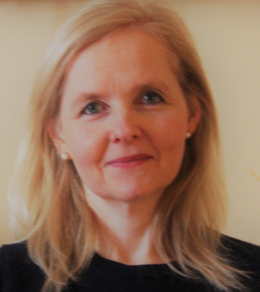
Paula Noonan
Some will call this nit picking, or trying to find those annoying larvae in hair that morph into crawling, itchy lice. But picking nits removes those creepy insects off the scalp and reduces the head scratching that occurs when education policy reports arrive in the news.
Two of these reports appeared recently, one after another. The first was conducted by Van Schoales, currently senior policy director at Keystone Policy Center with former Denver state representative Christine Scanlon as executive director. Schoales previously ran A+ Colorado, an “action tank” focused on school choice advocacy as the remedy for low or underperforming schools and districts. Christine Scanlon sponsored SB10-191, the bill that brought excruciatingly expensive and time-consuming standardized testing to the state.
The second report came from CU-Denver and was underwritten by Arnold Ventures, funded by Laura Arnold, lawyer and former oil executive, and John Arnold, an “investor.” They live in Houston and believe, like Bill Gates, Melinda Gates, Jeff Bezos, et al, that “philanthropy should be transformational.” A corollary is that philanthropists can make better decisions than the rest of us about how their tax-resistant billions will disrupt and repair “persistent problems in society.”
Schoales’ research, all six pages of it (two of which are non-content), finds that charter schools in grades 3-8 outperformed traditional public schools during the COVID pandemic. Roll out the drums. His methodology is as basic as it gets. He assumes the Colorado Department of Education’s school performance framework provides an authentic measure of school quality. He then counts the number of traditional schools and charter schools that reached CDE’s “performance” rating. More charters (85%) reached the number than traditional district schools (66%).
In addition, 37% of charter kids in grades 3-8 met standards vs. traditional school kids at 31% in language arts. In math, 31% of charter kids in grades 3-8 met standards compared to 27% of traditional school kids. The numbers switch by high school when charters “lag behind” or, at best, “match” traditional comprehensive schools. Further, Schoales does no analysis on the larger context here, such as whether charter children’s families and friends experienced more COVID illness than district children or on the ethical debates that occurred related to online vs. on-site education as the pandemic unfolded.
A couple of issues arise from Schoales’ analysis, such as it is. First, if the standardized CMAS tests put somewhere around 65% of Colorado’s students below standard, what’s going on with the tests? Second, these results suggest some larger problem has overtaken the system, maybe money or the ongoing and disheartening diminishment of public schools struggling to make ethical decisions during the pandemic.
The Arnold-sponsored CU-Denver analysis, replete with statistical algorithms predicting different outcomes based on trends, finds that during Denver Public Schools’ “reform” years up to 2019, the “system” outperformed what would be expected from pre-reform years, more or less.
This report also uses the state’s standardized tests as a basis for analysis. It adds in graduation rates. The report asserts that DPS as a system, with its hybrid of charter and traditional schools, achieved remarkable success.
Except that the same nit-picky problems that appear in the Schoales report occur in this study and would likely appear in any analysis. Between 2006 and 2019, Denver’s school population increased substantially as middle-class to affluent families bought up homes in Central Park, formerly Stapleton, and Lowry neighborhoods. These communities added to the housing projects around DIA that included Green Valley Ranch. These families “transformed” the demographics of DPS with substantial growth among white and “others,” namely Asian students. At the same time, DPS experienced a decline in Black student population and some increase among Hispanics.
The district’s new charter schools, such as Denver School of Science and Technology, opened in Lowry and Central Park. Other “whiter” district-managed schools also came online as did “innovation schools.” The choice model had some effect on DPS’s performance, but the overall demographic changes must also have had a large impact.
A deeper examination of the numbers shows that graduation rates in DPS have generally been higher in district-managed schools than in charters. Since 2019, district-managed DPS schools have scored higher on CDE’s performance ratings in grades 3-8 and in high schools than charter schools. Innovation schools that mainly serve students in the east and northeast portion of the city, including Central Park, have performed up and down in relation to district-managed schools since 2019.
The up and down data of DPS’s performance ratings by governance categories call into question the reliability of any comparisons from year to year. It’s unclear how useful the performance numbers are for understanding what works or doesn’t work in terms of sustaining high-quality education delivery. The most reliable numeric variable that anticipates achievement performance, as has always been the case, is whether a student is lucky enough to come from a family with a healthy income.
A national report came out recently comparing how much money states spend on K-12 education. Colorado is in the bottom 10. No amount of so-called school reform will make up for that deficit. That’s a report takeaway that won’t go away any time soon unless some head scratching and pencil sharpening over school funding and standardized testing occur at the Capitol this year.
Paula Noonan owns Colorado Capitol Watch, the state’s premier legislature tracking platform.















